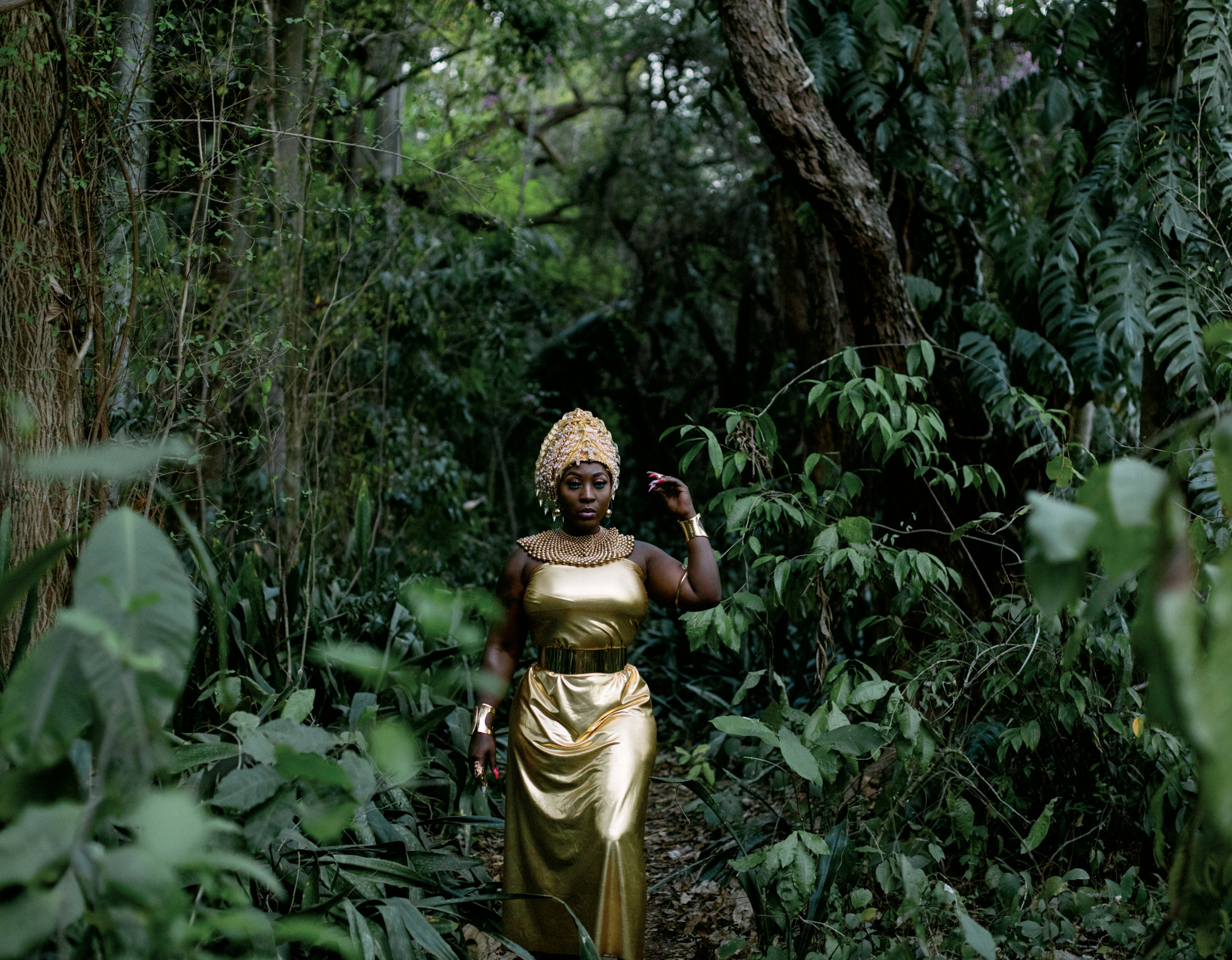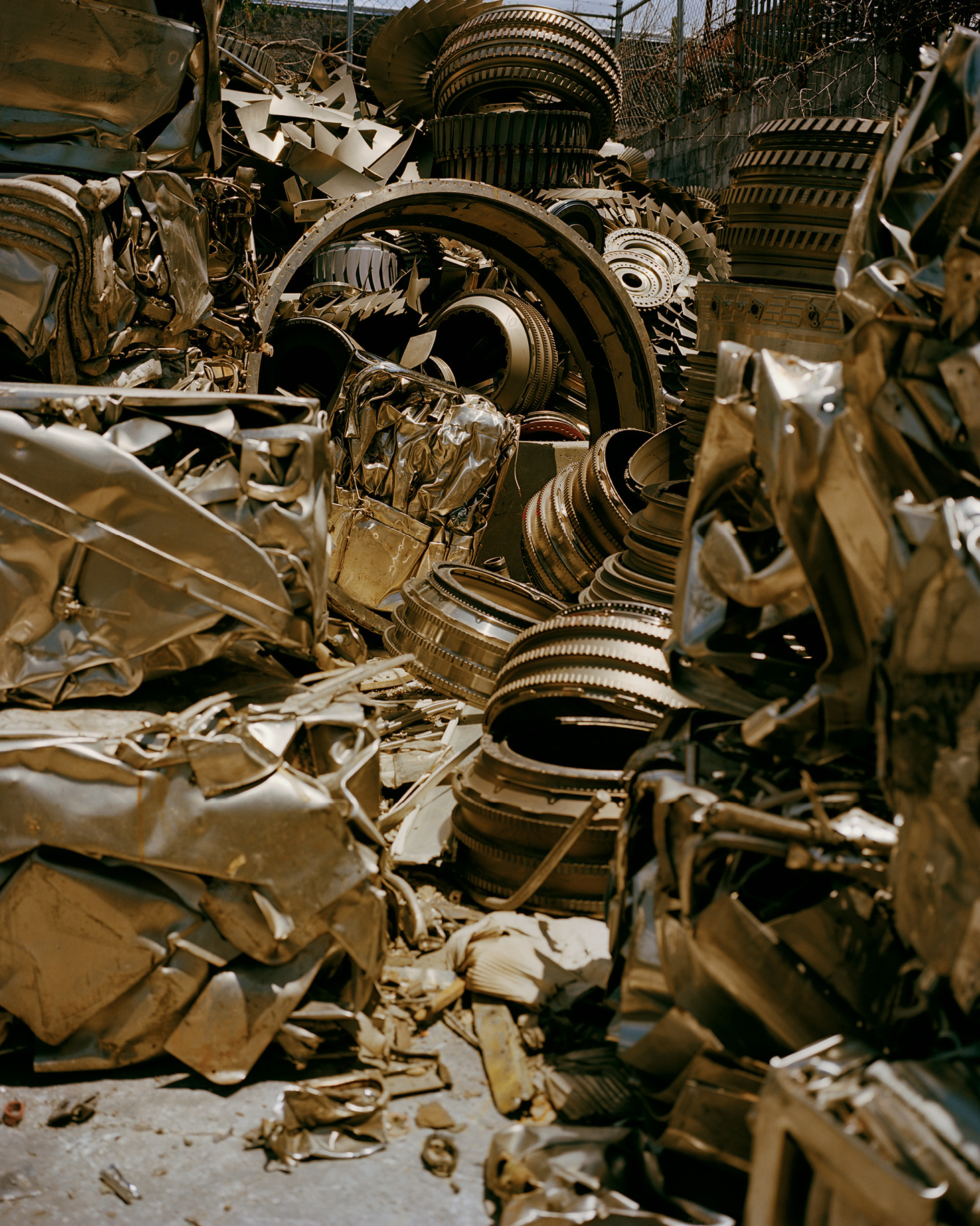
Spice. Kingston, Jamaica, 2019, a photo by Rose Marie Cromwell for the New York Times
Flash of the Spirit
How photographer Rose Marie Cromwell sees the world
By Kamille D. Whittaker
Rose Marie Cromwell goes where she is led then lingers. She takes her time.
One of her works, El Libro Supremo de la Suerte, is a photojournalistic study of Cuba shot and crafted between 2009 and 2016 as she became friends with a woman who ran numbers in an underground lottery. The game, called La Charada, is a spiritually-adjacent divination system where everyday things are paired up with numbers and imbued with meaning. Dream of a lizard? Mongoose cross your path? Play those numbers. Through her friend’s faith, Cromwell learned her own way of experiencing what Haitian-American anthropologist Gina Athena Ulysse calls “spirit as interlocutor.” And thus began Cromwell’s personal search for meaning in the everyday through photographic excavation.
Over the last couple of decades Cromwell’s center of gravity has been the Caribbean—the coast, the atolls—and one of its northern contours in south Florida, where she’s decided to stay awhile.
She first arrived in the region in 2007 on a Fulbright scholarship to research the Panama Canal as a world trade route—a geopolitical curiosity that took root after she witnessed first-hand the World Trade Organization protests in 1999 in her hometown of Seattle.
Some of Cromwell’s documentary photography and performative images in the Caribbean indeed channel a simmering discontent with globalization, exploitative environmentalism, and other colonial retentions. Others, as with her captures of women in Cuban jazz, eschew easy motifs for arresting nuance and joy both quiet and unbound. Like a diptych, she couples the chanteuses with found objects or nature. In one pair, red lips sing alongside spicy jatrophas. All are awash with brilliant color and light.

Junkyard, 2019, pigmented inkjet print, by Rose Marie Cromwell © The artist. Courtesy the High Museum of Art, Atlanta, purchase with funds from Wanda Hopkins, 2023.106
Here, Cromwell puts into words the in-betweens and undertow of her lived experience in the Caribbean that helped refine her gaze and subsequent compositions: A Kingston dancehall queen damp with work in 2019; grime-stained fingernails in Guyana’s petrostate in 2022; cassava piled like hands clasped in prayer. Mangoes everywhere.
For meaning can be found in everything if one looks long enough.
Kamille Whittaker: You spent ten years putting together King of Fish, a photo project about the Coco Solo community, which lived in decommissioned U.S. naval barracks alongside the Panama Canal. How did you end up in the surrounding spiritual revival churches?
Rose Marie Cromwell: Panama was made up of a lot of laborers who came from places like Barbados and Jamaica to build the Panama Canal. They were so influential in Panamanian culture, yet somehow in tourism images and existing photography, Panama was self-representing as a very white place. The lack of representation of Black Caribbean or Afro-Antillean culture as distinct from descendants of Cimarrons struck me. Church was a big part of that culture—not just the spiritual revival churches; I spent time in other churches too, doing research and detouring from my Fulbright project. I guess I was on a spiritual journey of some sort. And so, I thought of myself as facing this question of having kind of a convoluted, spiritual upbringing.
Growing up, my mom and my dad were kind of hippies, and we’d go to a Unitarian church. I was young when my mom and my dad divorced. My mom remarried a Catholic man, my stepfather, and then we started going to church mainly on holidays. We weren’t baptized so we would sit in the back and not have to do anything [ceremonially], but also not really understand. There was no real connection, you know? So, after having those turbulent teenage years, I was always wanting to find something that would give me a sense of purpose or something I was missing internally.
What impression did the churches leave on you?
There’s this intensity in those spiritual places that was moving to me. I saw the power. I became interested in how people were finding their spiritual identities; maybe because I was curious about how I would find my own one day. And since Panama, it’s like my life has also been this series of saying yes to these kinds of seemingly random encounters with spirit.
How did this play out once you got to Cuba?
In Cuba, I had a Babalawo [a spiritual title that denotes a high priest stature in Ifa—an African-derived divination system within Santería] as my assistant and I became really embedded in his family. His mother is a Santera [a priestess] and an anthropologist who has written a number of books about Santería. They never pushed religion or Santería on me by any means; they were just happy to answer questions. But I deeply respect it. Animistic religion has really influenced how I move around and see energy in the world. Just being in a world where there’s a lot of people who are of that religion or that spirituality influenced how I started seeing the world. Cuba was where I was defining my aesthetic, and eventually my photos.
Miami is the setting of the photos you currently have on display at the High Museum of Atlanta (the exhibition, Truth Told Slant, features the work of five contemporary photographers who take unique approaches to documentary photography). You’ve said that Miami has a lot of things that look outward and that it “points to other places.” What does this mean?
I started this latest project, A More Fluid Atmosphere, thinking I was going to do something about Santería in Miami—what it looks like in Miami, or how people were practicing it. But I ended up being led somewhere else. I realized that maybe it was the landscape of Miami that I was more interested in or certain neighborhoods that were either changing or more about commerce and industry—where people lived there but there were no grocery stores. It just seemed like it was mainly about goods coming in and goods coming out. Miami is this capital of where people end up immigrating to from Latin America and the Caribbean, but people also leave. It’s very transient.
Everybody’s remembering where they came from and trying to kind of bring some of that to Miami. But then I think: What’s Miami’s identity? It’s ever-shifting. And it’s also on porous ground. I’ve been working on a story for two years about the sugar industry in Florida. And through this history, I’ve learned about South Florida being a big landfill. Everything south of Lake Okeechobee is actually what you’d imagine the Everglades to be—marshland. The U.S. Army Corps of Engineers dug canals so that the water from the lake would go directly to the east and west coasts; and they were able to fill in the land in between. You can see it from the sky when you fly over Miami. The canals made it possible for people to live in those areas like West Miami. It’s one of the largest projects undertaken by the Army Corps of Engineers—second, perhaps, to the Panama Canal. So, we’re not sitting on very stable ground. It’s a more fluid atmosphere, in the words of Joan Didion.
How does the exhibition title, Truth Told Slant, apply to your work?
I was always interested in different ways to tell stories about place—maybe more personal ways to tell stories about place. The way I talk about my work stems from the documentary tradition of talking about place, but then it goes into either a more poetic or conceptual direction. That’s “truth told slant” to me—it’s truth from my truth. It may involve performance or bringing in other media, kind of like thinking about how images interact in our world, and then making images that react to that. It’s me reacting to what images there are of a place already and then trying to make something different.
You’ve made a practice of using found objects and sculptural elements in your compositions. How does it help you tell the story that you’re trying to tell? And what does it require of you and the viewer?
I started to incorporate objects when I was exhibiting El Libro in Panama. I realized that maybe I didn’t need the image of the door leaning, maybe I could just use the actual door leaning. I think that sculpture and photography are kind of related in that way. So, it’s almost like I’m using found objects and altering them a little bit and then displaying them. It kind of cuts out the photograph, in a sense. But I’ve always wanted my photographs, especially this work that’s in the High Museum, to be looked at as paintings more so than fact. I want the viewer not to just question the veracity, but really feel the image, and read the materials. What did the materials tell you versus, is this real? Is this not?
How do time and patience influence your fluency and your ability to learn a place?
The best reporting comes when you take the time to know a place and its people. I’m glad I waited so long to put out the work about Coco Solo because, first of all, the community never liked how the media talked about them in this condescending way. And I was always aware of that. So, I wanted my images to be happier; you know, expressing things I felt and saw because there were a lot of happy times. But also, I think bringing in the archival military images gave us some historical context I wouldn’t have thought to add ten years ago. Also, I can see how the photography has changed over time. It just looks different. But I think it’s also in the editing now. So even if I photographed it in a way before now, I’m choosing the better images, or the images that make more sense for the narrative because I’m editing now.
It took me awhile to figure out how to move, how to interact with people, how to know how people even viewed photography in the Caribbean, Latin America, and where I am now in Miami. But Paula Kupfer [who specializes in the history of photography and modern art in Latin America, with an emphasis on the ecological and political dimensions of lens-based practices] once told me she thinks time is a medium that I use—and I think that is true.
Rose Marie Cromwell is a photo and video artist whose work explores the effects of globalization on human interaction and social politics. She is interested in the tenuous space between the political and the spiritual. Cromwell is from Seattle, Washington and has lived the past fifteen years between New York and Latin America. She is based in Miami, Florida.



